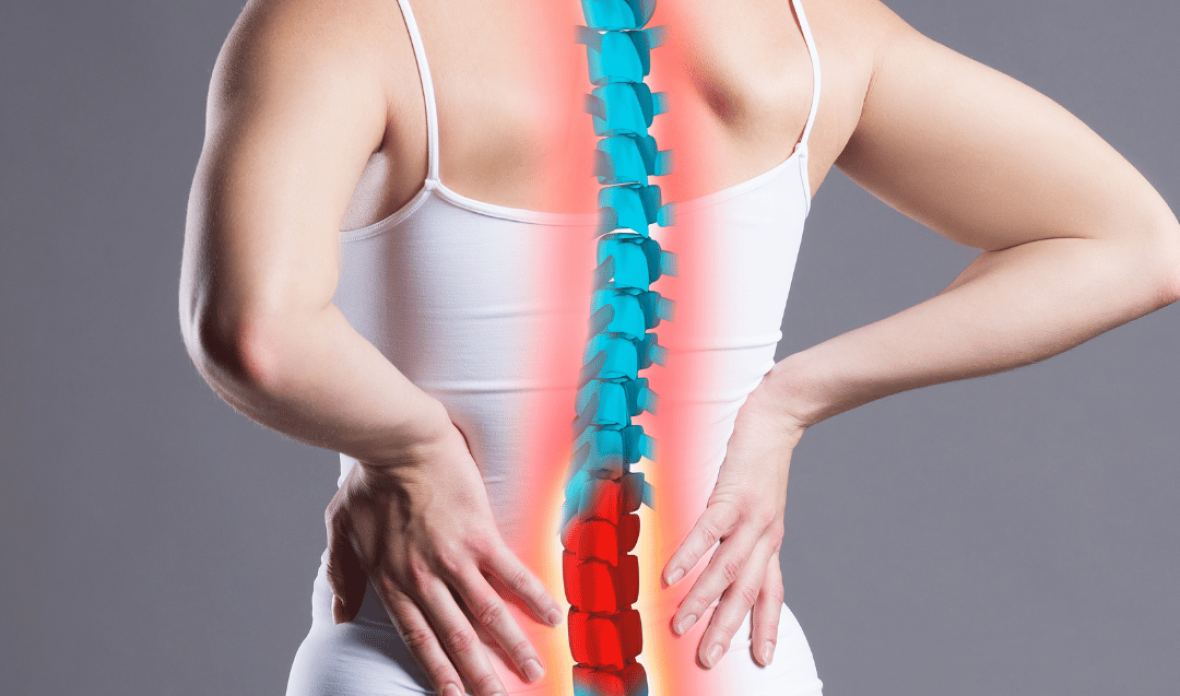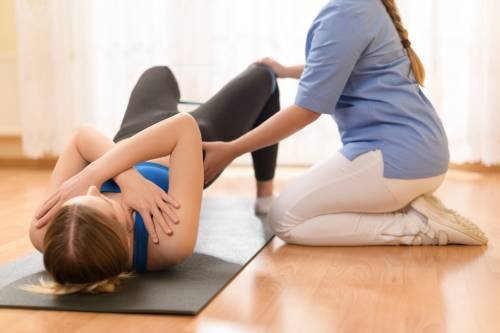Lumbar Radiculopathy

Book a Consultation:



History
The patient was a 54-year-old female presenting with low back pain radiating bilaterally to her legs (left more than right) for several years.
She experienced a burning sensation, tingling, and sharp shooting pain in both legs (L>R). Her NPRS was 8/10 . She had no significant past medical history. Her symptoms worsened with walking, standing, and bending but improved with rest, particularly in a side-lying position. She was unable to walk for at least 10 minutes and had difficulty turning in bed and lying supine. No investigations had been performed.
Evaluation
The patient presents with a right lateral shift. A lumbar range of motion (ROM) screening revealed a restricted ROM in all directions, with movements to the right provoking symptoms. The right-side glide was more painful and restricted than the left-side glide.
Sensory examination showed significant loss in the L4, L5, and S1 dermatomes, with 95% loss in the left leg and 90% loss in the right leg.
Motor assessment revealed weakness in both limbs. Myotome testing showed:
- Right leg: L4 and L5 graded 4/5
- Left leg: L4 graded 5/5, L5 graded 3/5
The Straight Leg Raise (SLR) test was positive at:
- 20 degrees for the left leg
- 40 degrees for the right leg

Additionally, the patient exhibited bilateral hip weakness, primarily in the gluteus maximus, as identified through manual muscle testing.
Based on these objective and subjective findings, the patient was diagnosed with Lumbar Radiculopathy.
Treatment
Visit 1
The first session primarily focused on patient education about their condition, including proper movement of the lumbar spine and activation of the associated muscle groups to support the lumbosacral region.
Since the patient presented with a right lateral shift and severe pain, the initial exercise was aimed at correcting posture and providing guided movements to reduce pain and realign the spine. Additionally, Accelerated Healing Therapy was utilized to help minimize pain.

Visit 2-9
Sessions 2–9 focused on the progression of therapeutic exercises to enhance core strength, stability, and lumbar spine range of motion. The primary emphasis was on developing core stability in various positions to maximize efficiency during activities of daily living (ADLs).
Additionally, due to increased nerve tension, nerve flossing exercises were incorporated to reduce neural tension and improve mobility.
Visits 10–15
By this stage, the patient’s lumbar range of motion had significantly improved in all directions. Pain levels decreased from 8/10 at worst to 1/10 at worst. Over two weeks, she experienced only 2–3 minor twinges in her lower back, compared to frequent daily episodes at the initial evaluation.
She could now walk 30 minutes pain-free, stand for over 30 minutes, and turn in bed with ease. All leg symptoms, including pain, numbness, burning, and tingling, had resolved.
By discharge, she had an excellent understanding of proper lifting mechanics for work and the correct muscle activation for her home exercise.
History
She had no significant past medical history. Her symptoms worsened with walking, standing, and bending but improved with rest, particularly in a side-lying position. She was unable to walk for at least 10 minutes and had difficulty turning in bed and lying supine. No investigations had been performed.
History
She had no significant past medical history. Her symptoms worsened with walking, standing, and bending but improved with rest, particularly in a side-lying position. She was unable to walk for at least 10 minutes and had difficulty turning in bed and lying supine. No investigations had been performed.
History
She had no significant past medical history. Her symptoms worsened with walking, standing, and bending but improved with rest, particularly in a side-lying position. She was unable to walk for at least 10 minutes and had difficulty turning in bed and lying supine. No investigations had been performed.
Evaluation
The patient presents with a right lateral shift. A lumbar range of motion (ROM) screening revealed a restricted ROM in all directions, with movements to the right provoking symptoms. The right-side glide was more painful and restricted than the left-side glide.
Sensory examination showed significant loss in the L4, L5, and S1 dermatomes, with 95% loss in the left leg and 90% loss in the right leg.
Motor assessment revealed weakness in both limbs. Myotome testing showed:
- Right leg: L4 and L5 graded 4/5
- Left leg: L4 graded 5/5, L5 graded 3/5
The Straight Leg Raise (SLR) test was positive at:
- 20 degrees for the left leg
- 40 degrees for the right leg
Additionally, the patient exhibited bilateral hip weakness, primarily in the gluteus maximus, as identified through manual muscle testing.
Based on these objective and subjective findings, the patient was diagnosed with Lumbar Radiculopathy.
Treatment
Visit 1
The first session primarily focused on patient education about their condition, including proper movement of the lumbar spine and activation of the associated muscle groups to support the lumbosacral region.
Since the patient presented with a right lateral shift and severe pain, the initial exercise was aimed at correcting posture and providing guided movements to reduce pain and realign the spine. Additionally, Accelerated Healing Therapy was utilized to help minimize pain.
Visit 2-9
Sessions 2–9 focused on the progression of therapeutic exercises to enhance core strength, stability, and lumbar spine range of motion. The primary emphasis was on developing core stability in various positions to maximize efficiency during activities of daily living (ADLs).
Additionally, due to increased nerve tension, nerve flossing exercises were incorporated to reduce neural tension and improve mobility.
Visits 10–15
By this stage, the patient’s lumbar range of motion had significantly improved in all directions. Pain levels decreased from 8/10 at worst to 1/10 at worst. Over two weeks, she experienced only 2–3 minor twinges in her lower back, compared to frequent daily episodes at the initial evaluation.
She could now walk 30 minutes pain-free, stand for over 30 minutes, and turn in bed with ease. All leg symptoms, including pain, numbness, burning, and tingling, had resolved.
By discharge, she had an excellent understanding of proper lifting mechanics for work and the correct muscle activation for her home exercise.

